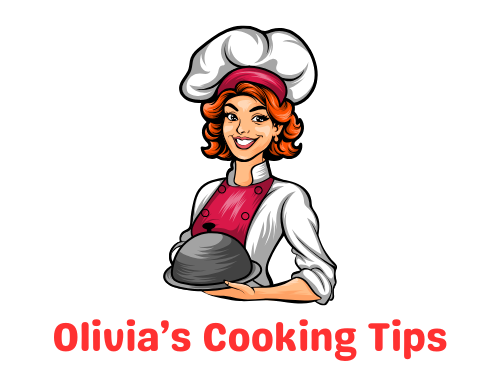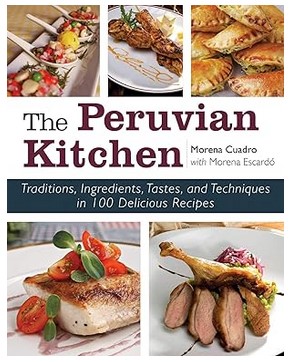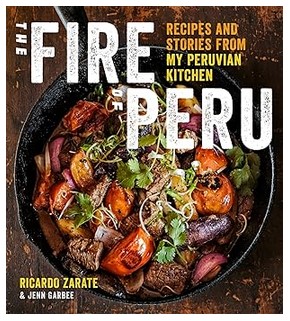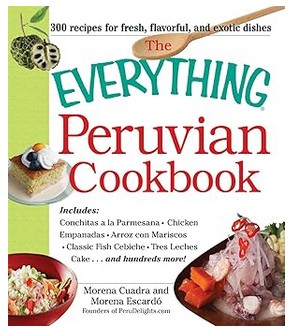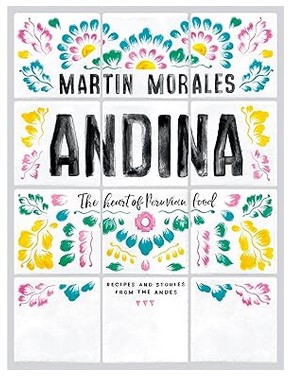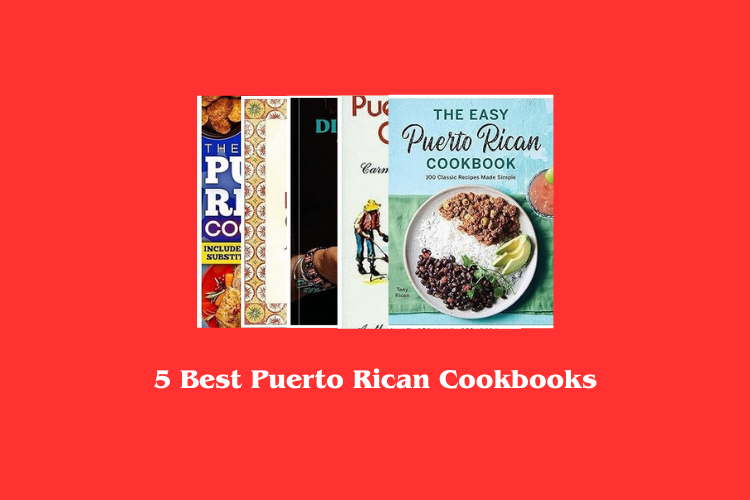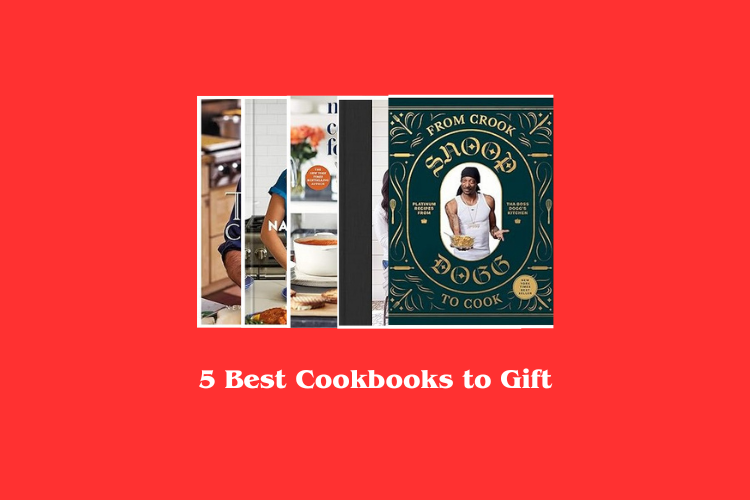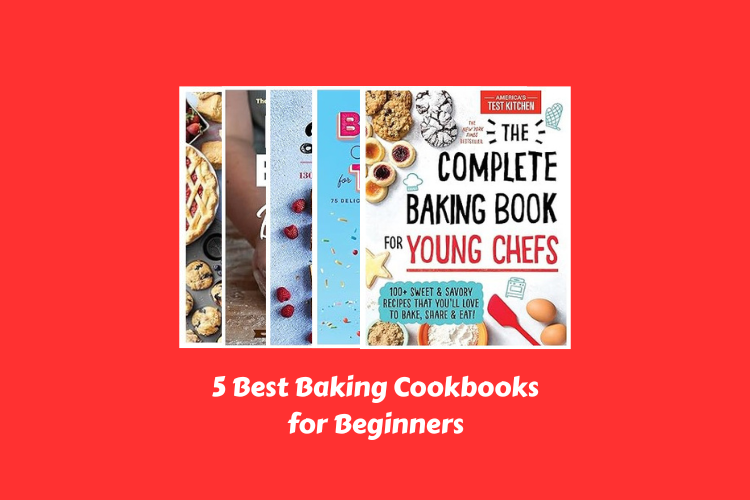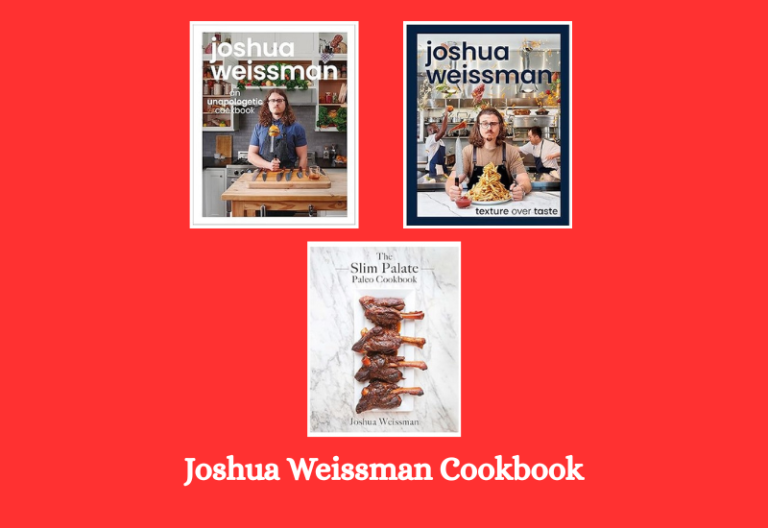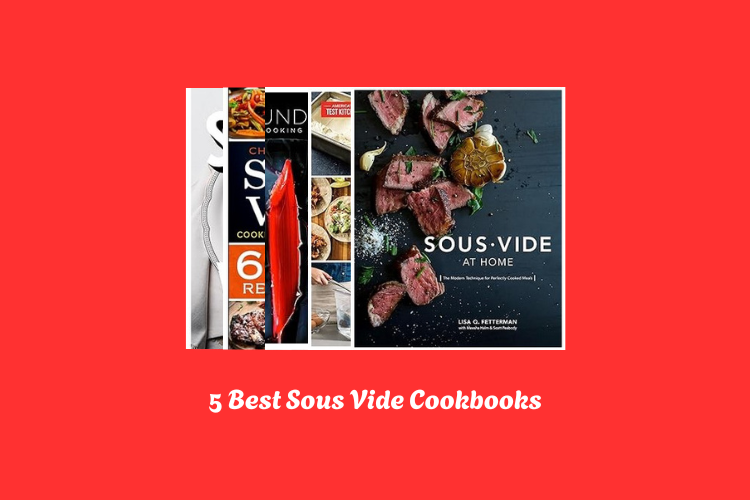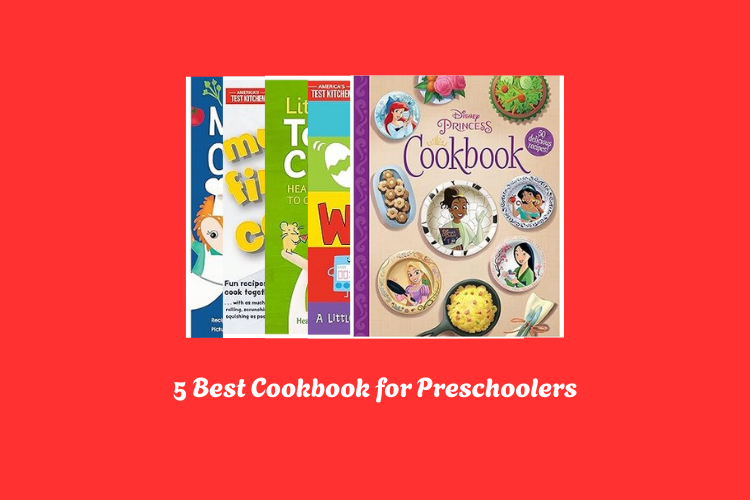5 Best Peruvian Cookbooks to Explore Authentic Flavors
Peruvian food has earned a reputation as one of the most exciting cuisines in the world. From fresh ceviche to hearty lomo saltado, the dishes carry a unique mix of flavors influenced by indigenous traditions, Spanish heritage, and Asian touches.
A good cookbook can guide you through these bold tastes and help you prepare meals that capture the heart of Peru. Home cooks often search for reliable recipes that balance authenticity with easy-to-follow steps.
The right book does more than share instructions; it introduces culture, history, and the story behind each dish. With guidance from talented chefs and culinary experts, you can bring vibrant Peruvian meals to your own table.
This list highlights five outstanding cookbooks that celebrate Peru’s diverse food traditions. Each title offers something special, whether it’s classic recipes, modern twists, or personal stories from the authors. These books will inspire flavorful adventures in your kitchen.
5 Best Peruvian Cookbooks 2025
1.
Cookbook Overview
A Culinary Journey
The Peruvian Kitchen takes readers on a journey through Peru’s vibrant gastronomy. It does not stop at recipes but explores the history and traditions behind them. Each page highlights the influences that shaped modern Peruvian cuisine, from the Incas to European, Asian, and African cultures.
A Blend of Cultures
The book explains how ingredients and techniques from around the world merged with local traditions. The result is a colorful and flavorful mix of dishes. Readers can explore how quinoa, potatoes, seafood, and spices form the base of many meals.
A Guide for All
This cookbook works for both beginners and experienced cooks. Those new to Peruvian food will find simple instructions. Readers who already love the cuisine will enjoy the depth and cultural background shared with every recipe.
Recipe Categories
Cebiches
Cebiche, Peru’s most famous dish, gets special attention. The book provides recipes for traditional versions as well as creative variations. Each recipe focuses on fresh fish, citrus juices, and spices that define the dish.
Piqueos and Starters
Small plates, known as piqueos, introduce readers to the variety of flavors in Peruvian cooking. These include bites that mix seafood, corn, potatoes, and chili peppers. They work well as appetizers or light meals.
Soups and Stews
Peru has a wide range of comforting soups and stews. Recipes highlight ingredients like quinoa, chicken, beef, and vegetables. These dishes reflect the country’s climate and geography, from the Andes to the coast.
Traditional Sweets
Peruvian desserts balance sweet flavors with unique textures. Recipes cover classics like alfajores, mazamorra morada, and rice pudding. They bring a sweet finish to the meal and reflect Peru’s cultural fusion.
Features
Rich History and Traditions
Beyond recipes, the book shares stories about the origins of Peruvian food. Readers learn how Incan agriculture combined with Spanish and Asian flavors to form a diverse cuisine.
More than 100 Recipes
With over one hundred recipes, the cookbook offers plenty of variety. Readers can explore seafood dishes, meat-based meals, vegetarian options, and desserts. Each recipe is clear and easy to follow.
Easy to Follow
Instructions are written in simple steps, making them accessible even for those new to cooking. Ingredients are explained in detail, so readers understand their role in each dish.
Visual Appeal
The cookbook includes colorful images that showcase the vibrant look of Peruvian food. Photos help readers imagine the flavors and inspire them to try the recipes.
2.
Cookbook Overview
About the Author
Ricardo Zarate grew up in Peru and later built his career in Los Angeles. Known as the “godfather of Peruvian cuisine,” he introduces his readers to a blend of old and new. His cooking reflects Peru’s diverse roots indigenous, Japanese, Chinese, European and he brings them together with an American touch.
Style of the Cookbook
The book feels personal. Zarate mixes recipes with his life stories. You read about food traditions, family memories, and how he developed his style. It does not feel like just a recipe list. Instead, it reads like a journey through Peru and into his kitchens in Los Angeles.
Recipe Categories
Classic Dishes
Ceviche stands out. Fresh, citrusy, and bright, it represents the heart of Peruvian cuisine. Traditional stews and rustic meals also make their way into the collection. These dishes remind you of home-style comfort food.
Modern Creations
Zarate adds his own twist to Peruvian classics. There is Peruvian sushi, a unique blend of Japanese influence and local flavors. He also includes a Peruvian burger, a playful dish that brings familiar comfort but with a distinct taste.
Cocktails and Drinks
The book does not stop at food. Drinks matter too. Recipes for the Pisco sour and other cocktails highlight the social side of Peruvian culture. Meals feel complete when paired with these beverages.
Features
Number of Recipes
The cookbook holds about 100 recipes. They range from appetizers to desserts to cocktails. This variety means readers can explore Peruvian cuisine step by step.
Photography
Colorful photography fills the pages. The images are rich and vibrant, showing every detail of the food. Each photo makes the recipe look inviting and achievable.
Storytelling
The writing mixes recipes with personal stories. Zarate shares his journey from Lima to Los Angeles and the cultural bridges he built through food. These stories make the book feel alive.
Balance of Tradition and Innovation
The book respects traditional Peruvian food but also brings in fresh ideas. It shows how food can honor history while adapting to new styles. This balance makes it useful for both beginners and adventurous cooks.
3.
Cookbook Overview
Introduction to Peruvian Cuisine
Peruvian food blends native Quechua traditions with Spanish, African, Japanese, and Chinese influences. Each dish tells a story of history and culture. Ingredients often include quinoa, corn, potatoes, and fresh seafood. Spices and sauces like aji peppers give dishes bold, unforgettable flavors.
About the Authors
Food bloggers Morena Cuadra and Morena Escardo created this cookbook. They focus on simple, clear instructions for home cooks. Their passion for Peruvian cuisine shows in every recipe.
Number of Recipes
The cookbook contains 300 recipes. They cover a wide range of dishes, from everyday meals to festive specialties. Every recipe includes step-by-step instructions that are easy to follow.
Recipe Categories
Appetizers and Snacks
Recipes include tamale-style quinoa stew and small bites perfect for parties. These dishes introduce classic flavors and textures of Peru.
Main Courses
Dishes like aji de gallina and lima bean tacu tacu bring authentic Peruvian flavors to the table. Recipes balance meat, vegetables, and grains for satisfying meals.
Desserts
Sweet treats include yemecillas acarameladas, a traditional candied egg yolk dessert. Recipes are simple and fun for beginners.
Drinks
The cookbook features classic beverages like Pisco Sour. Drinks complement meals and show another side of Peruvian culture.
Features
Clear Instructions
Each recipe uses simple language. Steps are short and easy to follow. Ingredients are easy to find in most stores.
Cultural Notes
The cookbook explains the origin of each dish. Readers learn about traditions and cooking techniques from different cultures.
Versatility
Recipes suit both everyday cooking and special occasions. Meals can be adjusted for vegetarian or seafood options.
Visual Appeal
Photographs show finished dishes clearly. Photos guide readers and inspire confidence in cooking.
This cookbook is ideal for anyone interested in Peruvian cuisine. Recipes are approachable, ingredients are accessible, and dishes deliver authentic flavors. Cooking from this book brings Peruvian culture straight to your home kitchen.
4.
Cookbook Overview
Andina by Martin Morales
Andina introduces readers to the heart of the Andes of Peru. It features over 110 recipes inspired by centuries-old traditions and modern touches. Martin Morales, a well-known chef, shares not only recipes but also stories about the people, places, and culture behind each dish. The book includes vibrant photography and beautiful paintings that reflect Peruvian landscapes and life.
Focus on Tradition and Modernity
The book combines classic dishes with new creations from the author and his team at Andina restaurants. Each recipe is approachable for home cooks, yet retains authentic flavors. Readers can explore light raw dishes, rich stews, snacks, desserts, and drinks.
Recipe Categories
Starters and Snacks
Small dishes such as ceviches and light bites are perfect for sharing. These recipes highlight fresh ingredients, like herbs, corn, and native peppers. They bring out the bright and bold flavors of Peruvian cuisine.
Main Dishes
Hearty stews, roasted meats, and traditional recipes appear in this section. Recipes are simple to follow but full of depth. Ingredients focus on seasonal availability and authenticity.
Desserts and Drinks
Peruvian sweets and hot drinks reflect centuries of culinary heritage. Recipes use natural flavors and spices. Readers can create aromatic desserts and comforting beverages at home.
Features
Visual Appeal
Andina presents dazzling photography and artistic illustrations. They make the book visually engaging and help readers understand the dishes and culture.
Cultural Stories
Each recipe comes with a story. Readers learn about the Andes, the local ingredients, and the people behind the cuisine. Martin Morales honors the women chefs, or picanteras, who shape Peruvian food traditions.
Easy to Follow
Recipes are clear, short, and simple. Even beginner cooks can follow them. The book focuses on approachable techniques while maintaining authentic flavors.
Seasonal Ingredients
Andina emphasizes the use of seasonal ingredients. Readers can enjoy recipes all year round, adapting dishes to what is fresh and available locally.
Andina is more than a cookbook. It is a journey into Peruvian culture, food, and life. It allows home cooks to experience the Andes through flavors, stories, and tradition.
5.
Cookbook Overview
The Big Peruvian Cookbook
This cookbook is a full guide to Peruvian gastronomy. It covers a wide range of dishes that show the country’s multicultural influences. Recipes are simple enough for beginners but rich enough to satisfy more experienced cooks.
Food critic Eric Asimov praises Peruvian food as one of the world’s most important cuisines. This book reflects that reputation. Each recipe comes with clear instructions and tips for authentic flavors.
Target Audience
The cookbook suits anyone curious about international cuisine. Home cooks, food lovers, or anyone planning a Peruvian-themed dinner can use it. It introduces traditional dishes while also explaining cooking techniques unique to Peru.
Style of Cooking
Recipes focus on fresh ingredients. Many dishes emphasize seafood, potatoes, and local spices. The book highlights fusion techniques, showing how Peru blends multiple culinary traditions into one dish.
Recipe Categories
Starters and Appetizers
Peruvian starters are colorful and full of flavor. Recipes include:
-
Ceviche (Cebiche): Fresh fish cured in lime juice with onions and chili.
-
Piqueos: Small plates like anticuchos or empanadas.
Main Dishes
Main courses are hearty and diverse. Recipes include:
-
Lomo Saltado: Stir-fried beef with onions, tomatoes, and French fries.
-
Ají de Gallina: Creamy chicken with a mild chili sauce.
-
Arroz Chaufa: Stir-fried rice with fish or chicken, influenced by Chinese cuisine.
Traditional Sides and Potatoes
Peru is famous for potatoes. Recipes include:
-
Papa a la Huancaína: Potatoes in cheese sauce.
-
Causa: Layered mashed potatoes with fillings like chicken or tuna.
Desserts
Sweet treats reflect Peruvian traditions. Recipes include:
-
Suspiro a la Limeña: Creamy caramel dessert.
-
Alfajores: Soft cookies filled with dulce de leche.
Features
Easy-to-Follow Instructions
Recipes use short steps and simple language. They guide cooks from prep to plating. Ingredients are easy to find, especially in urban markets.
Cultural Insights
Each recipe explains its history. Readers learn how Spanish, African, and Asian influences shaped modern Peruvian cuisine.
Versatility
Recipes can suit weeknight dinners or special occasions. Many dishes allow substitutions for local ingredients without losing authenticity.
Visual Appeal
Photos help readers see the final dishes. They also inspire presentation ideas for home meals.
Culinary Techniques
Readers learn cooking methods unique to Peru, such as marinating seafood for ceviche or preparing potato layers for causa. These techniques give home cooks a real taste of authentic Peruvian cuisine.
Final Thoughts
Peruvian cuisine offers a mix of bold flavors, fresh ingredients, and rich traditions. Cookbooks that focus on this cuisine bring its diversity into your kitchen. Recipes range from tangy ceviches to creamy chicken dishes and comforting potato layers.
Clear instructions and cultural insights make cooking easier and more enjoyable. Exploring these dishes at home allows you to taste Peru without traveling. For anyone eager to try authentic recipes, Best Peruvian Cookbooks provide a reliable and inspiring guide.
